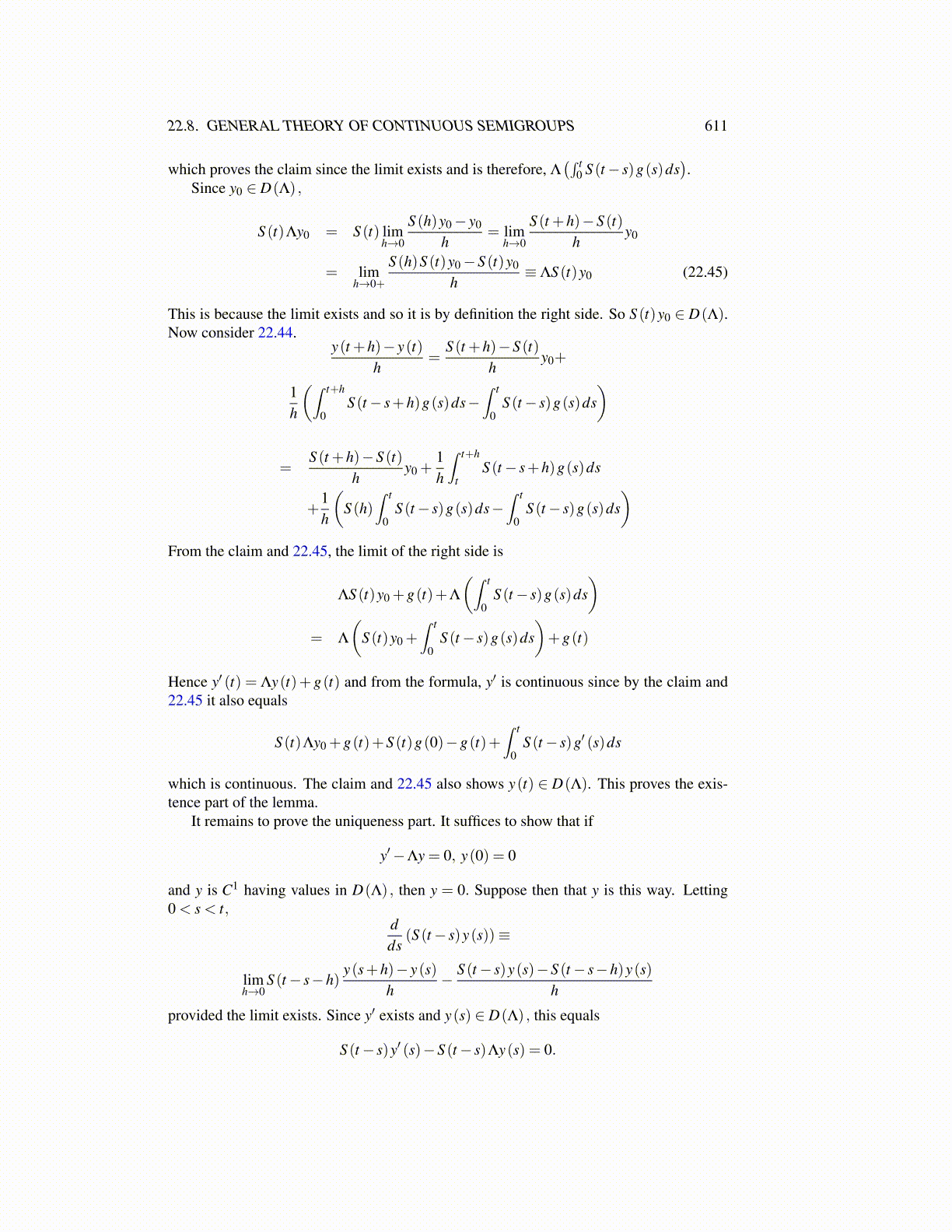
22.8. GENERAL THEORY OF CONTINUOUS SEMIGROUPS 611
which proves the claim since the limit exists and is therefore, Λ(∫ t
0 S (t− s)g(s)ds).
Since y0 ∈ D(Λ) ,
S (t)Λy0 = S (t) limh→0
S (h)y0− y0
h= lim
h→0
S (t +h)−S (t)h
y0
= limh→0+
S (h)S (t)y0−S (t)y0
h≡ ΛS (t)y0 (22.45)
This is because the limit exists and so it is by definition the right side. So S (t)y0 ∈ D(Λ).Now consider 22.44.
y(t +h)− y(t)h
=S (t +h)−S (t)
hy0+
1h
(∫ t+h
0S (t− s+h)g(s)ds−
∫ t
0S (t− s)g(s)ds
)
=S (t +h)−S (t)
hy0 +
1h
∫ t+h
tS (t− s+h)g(s)ds
+1h
(S (h)
∫ t
0S (t− s)g(s)ds−
∫ t
0S (t− s)g(s)ds
)From the claim and 22.45, the limit of the right side is
ΛS (t)y0 +g(t)+Λ
(∫ t
0S (t− s)g(s)ds
)= Λ
(S (t)y0 +
∫ t
0S (t− s)g(s)ds
)+g(t)
Hence y′ (t) = Λy(t)+g(t) and from the formula, y′ is continuous since by the claim and22.45 it also equals
S (t)Λy0 +g(t)+S (t)g(0)−g(t)+∫ t
0S (t− s)g′ (s)ds
which is continuous. The claim and 22.45 also shows y(t) ∈ D(Λ). This proves the exis-tence part of the lemma.
It remains to prove the uniqueness part. It suffices to show that if
y′−Λy = 0, y(0) = 0
and y is C1 having values in D(Λ) , then y = 0. Suppose then that y is this way. Letting0 < s < t,
dds
(S (t− s)y(s))≡
limh→0
S (t− s−h)y(s+h)− y(s)
h− S (t− s)y(s)−S (t− s−h)y(s)
h
provided the limit exists. Since y′ exists and y(s) ∈ D(Λ) , this equals
S (t− s)y′ (s)−S (t− s)Λy(s) = 0.